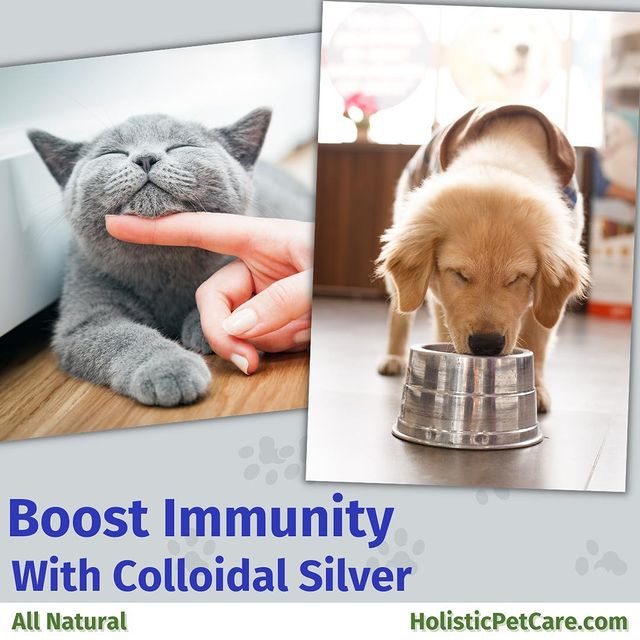Use of Sea Vegetables, Greens, and Grasses for Raw Fed Cats and Dogs
Posted by Jewel on Nov 11, 2023
Both dogs and cats seem to enjoy chewing on grasses, vegetables, and greens. Our fur babies are clearly unconcerned with the raging human debate on why they do it. Some argue it helps with digestive health, while other animal experts think they do it for fun.
What we do know is that greens and grasses provide our fur kids with valuable vitamins and minerals they don’t get from meat. In particular, sea vegetables are very rich in minerals and some essential amino acids. Seaweed, blue green algae, kelp, Irish moss, dulse, arame, nori, and other types of sea plants are extremely helpful as a part of your dog’s raw diet because they’re rich in nutrients and are easily digestible.
Dogs are better adapted to eating and digesting a limited range of plant matter than cats. They’re natural scavengers who have evolved to eat and thrive on some plant matter in their diet, so you shouldn’t be afraid of feeding them selected greens, fruits, and vegetables, so long as you prepare them first.
Let’s learn which greens are beneficial to dogs and cats and how to prepare them.
Sea Vegetables Are Best for Dogs and Cats
There’s a reason why almost all commercial kibble contains some kind of kelp extract. Seaweed is extremely rich in minerals and proteins, particularly iodine, magnesium, sodium, calcium, potassium, vitamin K, Omega-3 and Omega-6 fatty acids, phosphorus, and many others. They are also rich in antioxidants, phytonutrients, choline, and fiber.
This is good news for any paw-rent, but it’s important to remember that very high levels of iodine are toxic and potentially lethal to cats. While it’s okay for dogs to consume sea vegetables now and then, cats should eat very little but they can have blue green algae as a supplement. This is what we give our cats https://www.e3live.com/p-38-e3-feline-powder
Seaweed, blue green algae and kelp are the perfect complement to a raw diet for our fur babies. Experts estimate that it contains as much as 10x the level of minerals and nutrients found in land-based plants. In fact, seaweed is the richest plant-based source of minerals and amino acids in the world. For instance, it contains 25% protein!
Seaweed contains almost all the micronutrients and trace elements a dog needs to thrive and attain a high-vibe, healthy life. It even contains powerful antioxidants like fucoxanthin, which is very effective against free radicals and has anti-cancer, and anti-diabetic properties.
Seaweed has so many benefits that it’s difficult to list them all. Suffice it to say that it’s great for overall health, including gut health, heart health, cancer prevention, thyroid function, and insulin function.
Seaweed is an umbrella term for a wide variety of sea vegetables. The most common ones include:
- Kelp – kelp usually refers to various species of brown sea algae, such as giant kelp, bull kelp, arame, bongo, sugarwack, among others. Kelp even helps with controlling flea outbreaks and maintaining a healthy, radiant coat when applied externally.
- Spirulina – spirulina is a beloved human food due to its extremely high protein content, about 60%. It’s also extremely rich in vitamins, carotenoids, and antioxidants. It’s great for skin problems (such as dermatitis and eczema), arthritis, IBD, and colitis.
- Irish moss – also known as sea moss, Irish moss is a type of sea algae that is rich in micronutrients and antioxidants. Its medicinal value has been recognized for centuries, especially against digestive problems such as ulcers and gastritis.
- Kombu – this is a type of brown seaweed known for its useful digestive enzymes. It’s also extremely rich in iodine.
- Dulse – Dulse is a type of red seaweed that tends to grow in rocks. This color means it’s rich in beta-carotene as well as numerous minerals. Dulse is great for helping your dog regain energy and vitality.
- Wakame – used by humans in miso soup, wakame is a great source of iron, Omega-3 fatty acids, and is great for immunity, bones, livers, and kidneys.
These and many other types of seaweed should be served whole, and fresh wherever possible. If you can’t access fresh seaweed, look for dried or powdered organic seaweed.
One important thing to note is that seaweed from polluted waters may contain heavy metals and arsenic. Thus, you must ensure the seaweed supplement you feed your fur baby is ethically sourced, lab-tested, and completely organic. Check with the manufacturers for testing standards or request a certificate of analysis (COA) for more information.
There are some things to keep in mind about feeding any sea vegetables, However. Like all supplementation moderation is needed, especially when sea vegetables are so much higher in nutrients than other additives. You only need a little to give your pet the benefits of sea vegetables.
Greens and Fruits for Dogs and Cats
Green leafy veggies and some berries and fruits can be components in the diet of dogs. Cats are obligate carnivores and should not be fed veggies and fruits except some greens like wheatgrass or blue green algae.
Perhaps your fur baby loves to bite into a fresh watermelon or chew on carrots every so often. Most dogs enjoy a wide variety of fruits, such as apples, pears, different types of berries, as well as some veggies like broccoli or cauliflower. But it should be a once in a while treat and not 25% of the diet as many pet bloggers are promoting,
This is because the story is different when it comes to vegetables. Plant material contains cellulose and starch, which require special enzymes to break down and digest. Herbivores like cows and deer have these enzymes in their saliva, stomach, and intestines to help with digestion and absorption.
Dogs, unlike humans, lack these enzymes. Even the greens such as spinach, kale, cabbage etc. you give them must be prepared to ease digestion and other veggies fed only once in a while. You can do this through lightly steaming or fermentation.
The rule of thumb is, do not give your dog on a regular basis any raw fruit or vegetable that is heavy in starch. Additionally, many veggies contain potentially harmful substances called antinutrients.
Some dogs may not tolerate certain vegetables. However, often results in yeast conditions as the starch turns to sugar and it manifests as itchy skin, paws and ear infections typically.
Should Dogs And Cats Eat Grass?
Dogs and cats naturally like to chew on grasses for reasons they’re yet to tell us. It’s healthy and good for them for the most part, except that most grasses we have today are chock full of chemicals like pesticides, fertilizer, and weed killer.
If your dog has formed a habit of chomping on grass and its been sprayed, it’s best to get them some indoor pet grass where they can graze safely. This is especially helpful to cats, who like to chew on grass leaves and stalks.
For example, organic wheatgrass or other kinds of grass grown from grain provides your fur kid with the nutrients and minerals they’re missing from their diet. Most dogs and cats also like to forage on their own.
However, if you can access unbleached green tripe, it’s the perfect substitute for grass in your fur baby’s diet. Rich in proteins, nutrients, and enzymes, green tripe supplies pre-digested plant-based material that your dog needs to complete their diet. Big cats and wolves in the wild often eat the stomach contents of their prey for this reason.








